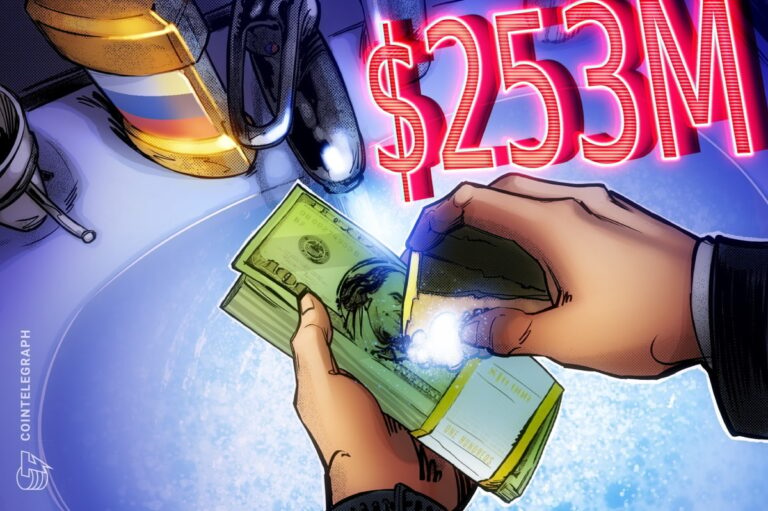JPMorgan Veteran to Lead Invesco’s $16.B Crypto Business
Invesco, a $1.9T asset manager, has announced the appointment of Kathleen Wrynn as its main crypto ETF manager.
Former JP Morgan veteran, Wrynn is tasked with organizing Invesco’s digital asset strategy and managing its portfolio.
According to an Invesco statement, the company has $1.6 billion in digital asset ETFs under management, including three Blockchain and Crypto Ecosystem ETFs and three Global Spot Cryptocurrency ETFs. In her new role, Wrynn will be expected to:
Invesco’s move is the latest in a flood of indications suggesting surging institutional investors’ adoption of cryptocurrency.
A Coinbase report highlighted that 86% of institutional investors are either exposed to crypto or plan to be in 2025.
This appears to be the year Wall Street finally embraces crypto with open arms, and hints that the future for Bitcoin is one of accelerated growth and scarcity.
Bitcoin Now a Luxury Asset
All evidence indicates Bitcoin is rapidly becoming seen as a luxury asset.
Luxury assets, such as fine art, classic cars, and rare watches, often retain, or even increase, their value during economic downturns. This is because they aren’t subject to the usual market fluctuations of stocks and other financial investments.
No wonder companies, institutions, and even countries are stacking Bitcoin at an accelerated pace. The global financial system is anything but stable right now.
It’s not only the big firms changing tack. A Triple-A report showed over 560M crypto owners worldwide, amounting to approximately 6.9% of the planet’s population.
 3.44M $BTC are already in treasuries at different public and private companies, exchanges, and governments, with the adoption rate up 3.81% over the past 30 days.
3.44M $BTC are already in treasuries at different public and private companies, exchanges, and governments, with the adoption rate up 3.81% over the past 30 days.
 While Michael Saylor’s Strategy leads the pack with 592,000 $BTC in reserves, other institutional investors are following suit:
While Michael Saylor’s Strategy leads the pack with 592,000 $BTC in reserves, other institutional investors are following suit:
- Metaplanet currently holds 10,000 $BTC, with the latest purchase amounting to 1,112 Bitcoins, valued at $117M. The company also aims for a 20,000 $BTC reserve by the end of 2027.
- Bitcoin miner, MARA Holdings, has the largest $BTC reserve, with 49,543 coins, valued at $5,32B, and produces them at a rate of roughly 30 per day.
- GameStop bought 4,710 $BTC between May and June 2025. The company followed the purchase up with a $1.75B convertible note offering, which hints at additional future Bitcoin investments.
- Bitcoin miner, Riot Platforms, currently owns 19,225 Bitcoins and produces them at a rate of roughly 16 $BTC per day.
- Galaxy Digital Holdings has a Bitcoin balance of 12,830 coins, valued at $1.36B.
- Mercurity Fintech, a New York-based digital fintech titan, plans to create its own $800M Bitcoin reserve, stating that ‘The tokenization of real-world assets is a transformative trend that’s changing how investors access markets.’
- Cantor Equity’s stocks surged by almost 500% after it announced a merger with Twenty One Capital, which plans to become the 3rd largest corporate Bitcoin holder, with a treasury of at least 42,000 $BTC.
According to a Gemini and Glassnode report, more than 30% of Bitcoin is held by centralized entities.

The trend is explained, at least partly, by a decrease in Bitcoin’s volatility over the last cycles, which appeals to long-term investors, including governments.
 Aside from the rising trend of Bitcoin adoption, there’s an even more interesting observation: these companies buy more Bitcoin daily, but they’re not selling any of it.
Aside from the rising trend of Bitcoin adoption, there’s an even more interesting observation: these companies buy more Bitcoin daily, but they’re not selling any of it.
This strengthens the idea that Bitcoin is becoming a luxury asset, with actors like Strategy virtually gatekeeping access to an increasingly more valuable and scarce asset.
Glassnode’s scarcity index also seems to support this idea, showing a strong correlation between the rising adoption rate and the diminishing returns associated with Bitcoin mining.

As the main contributor to Bitcoin’s scarcity, this again puts Michael Saylor’s Strategy in the spotlight.
According to Adam Livingston, $BTC analyst and author of ‘The Bitcoin Age and the Great Harvest,’ with an average 2,087 bitcoins bought per day, Strategy is acquiring four times the Bitcoin that miners can produce (450 per day).
In his view, this positions Strategy at the heart of the current scarcity curve, stating that ‘Strategy is synthetically halving Bitcoin and will set the cost of capital for the next 100 years.’
What does this all mean? According to Livingston, this means that, in a few years’ time:
‘Access to Bitcoin will require paying a premium. Lending against Bitcoin will cost more.
Borrowing Bitcoin will become a luxury business reserved for nation-states and corporate whales. Strategy will control the bottleneck.’
But why is everyone else stacking Bitcoin?
Bitcoin: The Future of Finance
According to River’s 2025 Bitcoin Adoption Report, 2024 saw a clear shift in Bitcoin accumulation patterns, with funds, ETFs, and businesses overtaking individual traders by a large margin.

But why?
Fidelity Digital Assets believes the shift is because institutional investors now feel safe with Bitcoin, noting that:
- Despite periods of volatility, Bitcoin’s performance maintains an upward trend over time
- Financial Accounting Standards Board’s (FASB) ‘Intangibles—Goodwill and Other— Crypto Assets,’ which finally lets companies use fair value accounting when reporting Bitcoin and crypto assets in their balance sheet
- Bitcoin’s perception as a hedge against inflation and economic uncertainty, which permeated the public consciousness during the COVID era
- Similarly, its ability to hedge against the banking system’s monetary debasement, thanks to its verifiable scarcity, with its fixed supply of 21B, and clear-cut monetary policy
Bitcoin has even surpassed gold in terms of growth rate, despite the 10:1 market cap difference.

And the Bitcoin train doesn’t seem to stop here. Analysts like Ark Invest’s Cathy Woods envision a $1.5M $BTC by 2030, while the Stock-to-Flow chart model predicts double that, at $3.2M.
These bullish predictions are propped up by Bitcoin’s performance over the years, a staggering all-time growth of 168M%, and the growing institutional adoption rate.
All in all, there’s little doubt that Bitcoin is the future of finance and is set to overtake fiat currencies in terms of stability, market trust, and inevitably, market cap.
But all’s not well on the OG blockchain
Bitcoin’s Problems
Despite its success, the Bitcoin blockchain isn’t without its faults.
The Bitcoin protocol currently faces issues like:
- Poor scalability that only allows for 3.3-7 transactions per second, which often translates to slow confirmation times, failed transactions, and high costs
- Its decentralized nature, despite being beneficial for the ecosystem overall, can also hinder progress, making protocol advancements slow and inefficient
- Subpar security due to its decentralized nature
While there’s no easy fix on the horizon, several solutions have been proposed and tested to address some of these problems, but none have done so conclusively.
The Lighting Network, proposed by Thaddeus Dryja and Joseph Poon in 2015, is a Layer 2 upgrade to address Bitcoin’s poor scalability and decrease costs through off-chain transaction processing.
But after the Lightning Network failed to reduce transaction costs and showed clear signs of security blindspots, the project was all but abandoned.
The Proof of Stake (PoS) consensus mechanism was also pitched as an alternative to Bitcoin’s Proof of Work (PoW) to reduce energy consumption and improve transaction processing times.
The problem is that PoW makes up for its slow performance with strong security. As such, Bitcoin fans are unlikely to transition en masse because better security always trumps faster transactions.
But is there hope that Bitcoin will become better on all fronts?
Bitcoin Hyper is the latest solution that promises to tackle some of Bitcoin’s problems like poor scalability, subpar transaction speeds, and high network costs.
Bitcoin Hyper ($HYPER) – The Layer 2 Solution Promising to Upgrade Bitcoin’s Performance
Bitcoin Hyper ($HYPER) is the upcoming Layer 2 to upgrade Bitcoin’s network performance and address the scalability bottleneck.
At up to 7 transactions per second, Bitcoin is lagging behind the needs of modern financial systems, but Bitcoin Hyper aims to change that.
 The Layer 2 solution will address Bitcoin’s network issues via several mechanisms:
The Layer 2 solution will address Bitcoin’s network issues via several mechanisms:
- Low-latency work layer: Bitcoin Hyper’s blockchain exhibits low-latency performance, functioning as a bridge between users and Bitcoin’s Layer 1. This high-performance environment allows for faster transaction throughput and low-cost settlements, while preventing network congestion.
- Solana Virtual Machine (SVM): The SVM integration means faster execution of smart contracts and dApps, essentially giving Bitcoin Solana speed
- The Canonical Bridge: When you deposit tokens into the decentralized, non-custodial bridge, it mints the same amount on the Layer 2. The tokens are available for withdrawal on Bitcoin’s Layer 1 at any time, a system that reduces the likelihood of network congestion.
Bitcoin Hyper works on Bitcoin’s most pressing issues without impacting its security or brand trust, which recommends it as a viable Layer 2 solution.
$HYPER has been in presale since May 2025, and has accumulated over $1.7M. The project has been audited by Coinsult and Spywolf and was deemed safe for investors.
You can get in at a low $0.011925 right now and hold on for a chart boom post-launch.
Based on the project’s functionality, whitepaper, and roadmap, our analysts predict a price point for $HYPER of $0.32 by the end of 2025, amounting to an ROI of 2,583%.
If Bitcoin Hyper is successfully implemented and maintains investor interest, we could see $HYPER go as high as $0.90 by the end of 2030, or even higher. If that happens, you’re looking at an ROI of 7,447% if you buy today.
Bitcoin Hyper also offers a dynamic APY of 551% for a staking pool of over 95M, which is almost 5% of the total supply in just the first month of presale.
Visit the presale page, buy your $HYPER today, and hop on board the hype train; the earlier you join, the higher the potential ROI.
Is Bitcoin the Future?
Bitcoin is not only the future, but the now.
Based on Bitcoin adoption rates and chart performance, plus innovations like the coming Bitcoin Hyper ($HYPER) Layer 2 upgrade, it’s safe to say Bitcoin is only going up.
As always, don’t take this as financial advice. Do your own research (DYOR) and invest wisely.

Editorial Process for bitcoinist is centered on delivering thoroughly researched, accurate, and unbiased content. We uphold strict sourcing standards, and each page undergoes diligent review by our team of top technology experts and seasoned editors. This process ensures the integrity, relevance, and value of our content for our readers.





